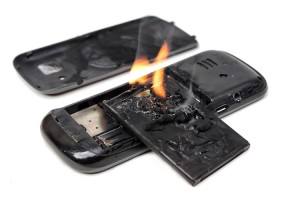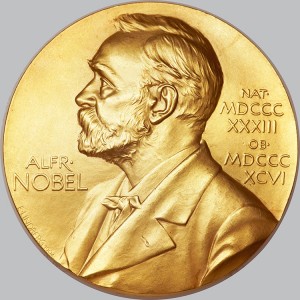Warning: Batteries Are Included
Wednesday, October 26th, 2016October 26, 2016
After two recalls since the product’s release in August, South Korean electronics manufacturer Samsung announced earlier this month that it was ending production of the Galaxy Note 7, the latest edition of its smartphone-tablet hybrid (or “phablet”). The Note had serious problems with its lithium-ion batteries that were causing it to ignite and explode, injuring users and damaging property.

Lithium-ion batteries used in smartphones and other electronics can sometimes overheat and even burst into flames. Credit: © Shutterstock
Lithium-ion batteries are a type of battery found in many electronic devices. They use the element lithium as the charge-carrying ion in the electrolyte, the substance that separates the battery’s electrodes—that is, the parts that send and receive the electric current. Such batteries have stable, reversible reactions (meaning they can be recharged) and are quite powerful.
All lithium-ion batteries work by moving lithium ions from one electrode to another. The electrolytes in lithium-ion batteries are dissolved salts that contain lithium. The salts are not dissolved in water, as in many other batteries. Instead, they are dissolved in an organic (carbon-based) solvent, such as ethylene carbonate, propylene carbonate, or dimethyl carbonate. Such electrolytes, unlike water-based electrolytes, generally remain stable at high voltages. However, they have the disadvantage of conducting ions poorly. Many of these solvents are also highly flammable.
To compensate for the electrolyte’s poor conductivity, the electrodes are spread out in microscopically thin layers. The lithium ions, then, must travel only a microscopically short distance through the poorly conducting electrolyte. Manufacturers accomplish this by layering thin sheets of alternating electrode structures on top of one another.
Pressures to increase battery life in new consumer products are immense. Stronger batteries can power more demanding devices or last longer between chargings. Improved batteries could make the difference between success and failure in a competitive marketplace. As a result, engineers create lithium-ion batteries with ever-thinner electrodes and separators, hoping to cram more energy storage into the same amount of space.
If this architecture is pushed too far, the extremely thin separator, a porous (hole-filled) barrier between the electrodes, can become damaged during the manufacturing process or in everyday use. Such damage may generate heat within the battery during charging or use. If the battery gets hot enough, the separators will suffer further damage, generating more heat. Eventually, this chain reaction ignites the flammable solvent, causing a fire or explosion.
Because Samsung is not precisely sure what is causing the batteries to combust, the company is permanently halting production and recalling all Note 7′s. Samsung is not alone in having problems with lithium-ion batteries. Several other products, including other smartphones, electric cars, and “hoverboards,” have suffered similar battery failures. Engineers and materials scientists continue to work to design more efficient—and safer—batteries to power our mobile electronic world.
Other World Book and Back in Time articles



